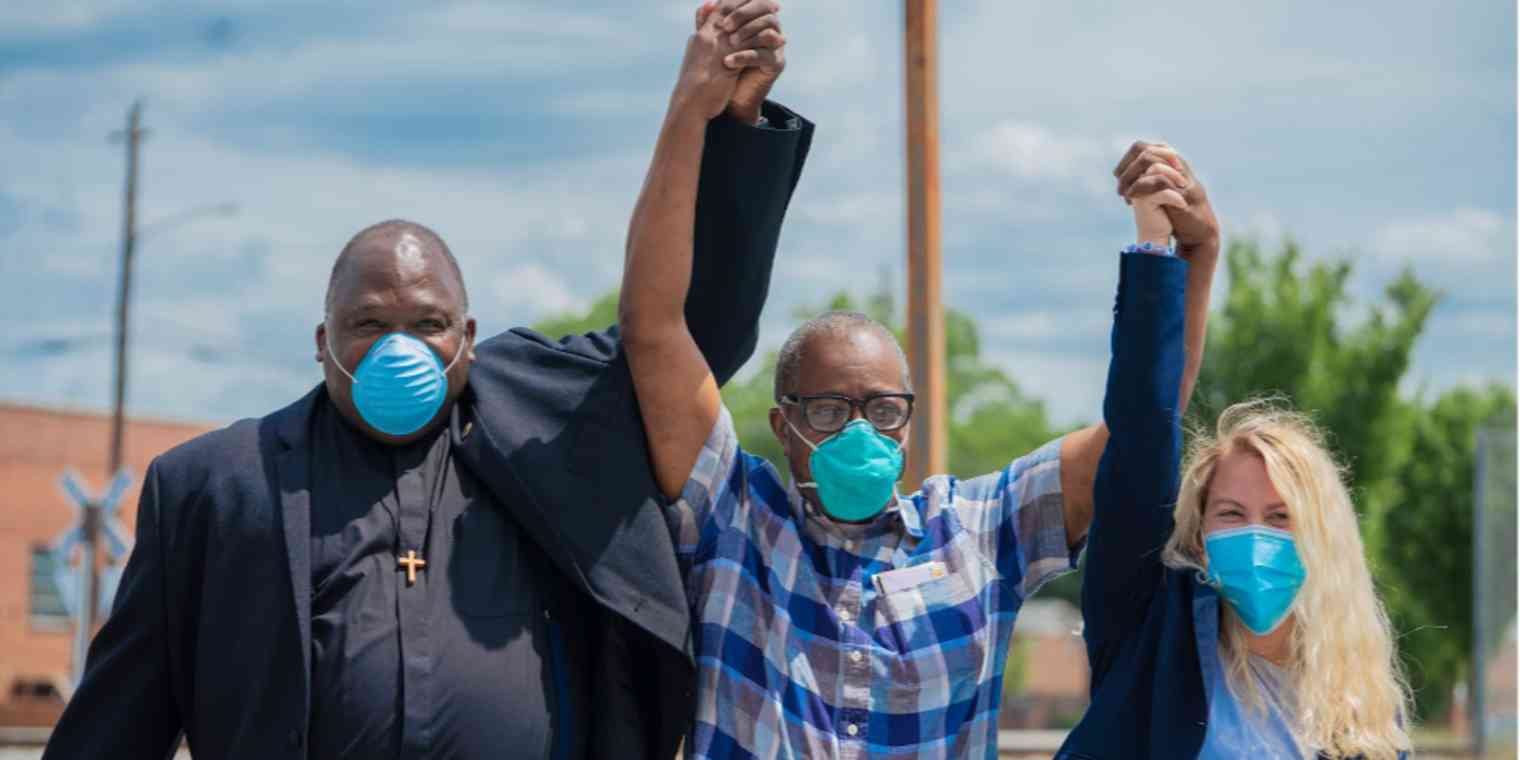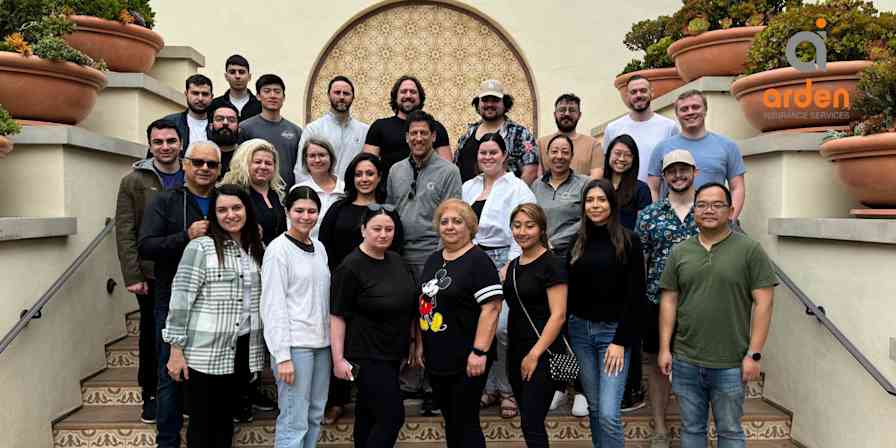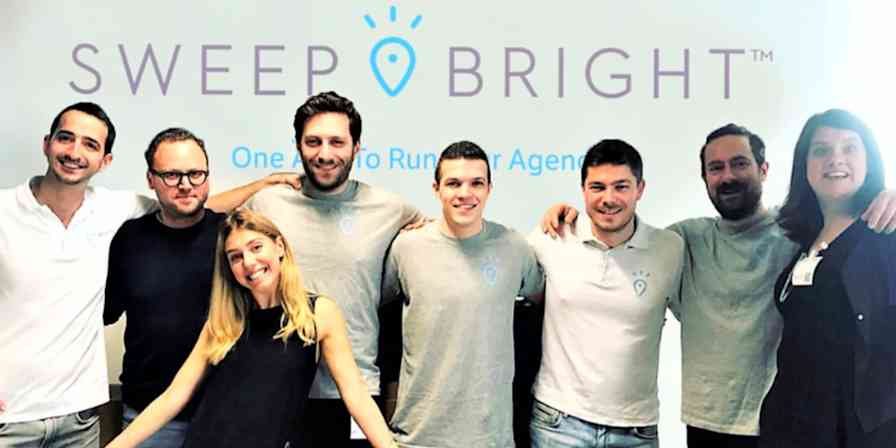For the Georgia Innocence Project, automation keeps staff and volunteers focused on their core mission—helping people wrongfully convicted of crimes.
"As a nonprofit, we always have to try and do more with less, which means that we are constantly running up against constraints of time and resources," said Operations Director Matt Holbrook.
And their area of expertise makes it even more difficult. The post-conviction criminal legal system has additional complications. From procedural barriers involved in appealing convictions to the challenges of working with clients who are imprisoned and need to communicate by mail or phone, the Georgia Innocence Project needs to manage many moving parts.
"Reversing a conviction after-the-fact is incredibly difficult—in Georgia, it's only been done 46 times in the past 30 years—yet we estimate that there are hundreds if not thousands of innocent Georgians currently in prison for crimes they did not commit," Matt said. "The essence of our work is finding ways around obstacles, so having reliable systems, clear processes, and consistent information is critical—and Zapier underpins all of that."
Our stories explore how people at businesses of all sizes use Zapier to solve common problems, get more done, and move forward faster. If you haven't yet, try Zapier for free to see what we're all about.
Matt started at the Georgia Innocence Project five years ago as its second full-time employee. He and the team—the executive director, a part-time bookkeeper, and a handful of volunteers and interns—did their work in a tiny basement office next to a bowling alley. He handled all the day-to-day operations, including office administration, communications, IT, volunteer and intern management, and fundraising. Since then, they've grown to a staff of 17 and moved into a real office, and Matt's been able to dedicate his time to supporting the team and developing and improving the processes and policies that allow them to get work done.
Georgia Innocence Project uses:
Google Forms to collect information from many places
Code by Zapier to assign unique identifiers to requests
Google Drive to store documents
Clio as a centralized client and case database
Webhooks by Zapier for versatility
Api2Pdf to prepare envelope information for printing
Getting started by organizing communication
Communication is at the heart of what the Georgia Innocence Project does. Information came to them over the phone: everything from clients calling for updates on cases, people asking how they can support their work, and law enforcement agencies responding to requests for information.
Volunteers and interns took down information about the calls and passed the notes on to the right person. In his first week, Matt noticed many of these handwritten messages landed on the executive director's desk. Matt wanted to eliminate those notes and started by creating a digital call log using Google Forms, sending all the responses to a spreadsheet. That was better, but it still required a lot of manual work to distribute things to the right people.
That's when he came across Zapier and set up an automated workflow—called a Zap—that automatically emailed the message logged in the form to the right person after it came in. The person taking the message noted the email address of the person who needed to see the message, and then the Zap gathered the message information and sent it in an email.
Send email via Gmail for new Google Forms submissions
Then, if it turned out that the message needed to go to someone else, it was easy to forward it to the right person.
You'll need a Zapier account to use the workflows in this piece. If you don't have an account yet, it's free to get started.
How automation powers the Georgia Innocence Project's work
While trials are what come to mind when people think about criminal convictions, appeals work is done mainly on paper. It's collecting information, keeping people informed, and sending things out. Matt has woven automation throughout their processes, creating systems that give staff space to litigate cases, raise funds, and keep clients updated—without having to spend time on fiddly, manual tasks.
Open records requests
"We have to collect a lot of public documents when re-investigating cases, and so have dozens of pending requests at any given time," Matt said. "Tracking and following up on those requests is critical to our investigation process."
Google Forms is the starting place for this, too. Attorneys and interns fill out a form for each request. The first part of the Zap uses a code step to generate a unique ID that's added to a central tracking spreadsheet. The Zap creates a folder in Google Drive where the request file and any responses are stored, and that file is added as a record in the client's Clio case file.
The request is then sent off automatically to the agency, using Gmail if they accept requests that way, otherwise by fax or mail. Responses are tracked using that unique ID generated by the code step, and if they're emailed back, are automatically added to the original folder.
Envelope printing
Working with people in prison means a lot of their communication has to go through the mail.
"One thing that used to be a constant irritation was printing envelopes," Matt said. "We had interns/staff using many different devices, and printing through Word yielded inconsistent results and a lot of wasted time (addresses would be printed upside down, or would be oriented the wrong way, or on the wrong type of paper)."
Now, they use the Zapier Chrome Extension as a simple place where people can enter a mailing address. A Webhooks step sends the address to a service called api2pdf which creates an envelope PDF, and then another webhook sends the PDF off to PrintNode for printing.
"Instead of fussing with Word settings and printer defaults, I just send folks to the extension," Matt said.
You can start a Zap like this one using this template:
Send POSTs to another URL for new pushes with fields
Read more: Learn more ways to automatically print shipping labels and more ways to use the Zapier Chrome Extension.
Applicant intake
People wanting the Georgia Innocence Project to look at their case write in to apply, and staff then need to create case files in their case management system, Clio.
"Consistency is key in creating these files, so that we can properly track and report on our cases," Matt said. "We used to create each new file manually, but last year switched over to using a Google Form to collect and (crucially) validate information and automatically create the case file."
From that Google Forms trigger, they implement several Clio action steps, creating the case file and linking assets like the prison where the applicant is being held, so everything is tied together and ready for staff to review. The Zap also creates time entries and follow-up tasks.
Here's a starting point for a system like this:
Create Clio matters from new Google Forms responses
Intern and staff hiring
Hiring used to require a significant amount of work to gather and collate information, then review it and compare. They've now automated the process, using a combination of Gmail and Google Forms. They use Zaps to automatically create folders that store application materials, add information to tracking spreadsheets, email candidates, and alert the hiring manager when things are ready to review.
Possible example Zaps:
Send email via Gmail for new Google Forms submissions
Add Google Sheets rows for new Google Forms responses
Automation as a foundation for focused work
"With all of the different Zaps we have going, I think if we were to try and do them manually, we would have to hire someone full-time just to approximate the same work, and to really replicate it with the same quality and consistency, we'd probably need two or three people," Matt said.
Here's what Zapier has allowed the Georgia Innocence Project to get done:
Process and track 270 open records requests over ~2 years
Process 830 intern applicants over ~2 years
Receive and track 5,360 phone calls over 4.5 years
Review 628 job applicants for 14 different positions
Track 10,591.6 hours of volunteer/intern time over 3 years
Process 2,400 expense records over 3 years
Matt has always considered persistence as one of his most important professional skills: he's willing to just plug away at things until they were done.
"I still see that as important, but using Zapier has helped me think my way around problems," he said. "If there's a project that would require 10 hours of work approached head-on, my first thought isn’t that I need to get started right away, but that I need to think about alternative approaches before diving in. I’ve learned that most of the time there are dozens of ways to tackle a problem and that choosing the right method can lead to compounding efficiencies as you go."
What's your story? Tell us how you use Zapier to do more. You can also read even more customer stories and find new ways to improve your workflow and productivity.
Related reading:
How legal teams and law firms can be more efficient with automation
How to send form and ticket information to a spreadsheet for better analysis
Photo courtesy Georgia Innocence Project. Pictured is Georgia Innocence Project attorney Meagan Hurley (right), with GIP client Johnny Lee Gates (center), on the day he was released from prison after 43 years of wrongful imprisonment. On the left is Minister Edward Dubose, who also helped advocate for Johnny's release and is the president of the NAACP Columbus Georgia Branch.





